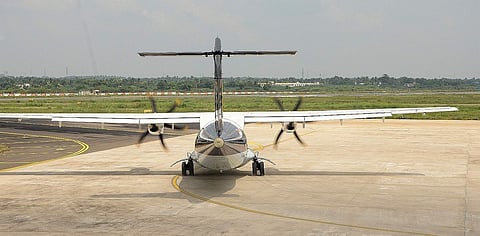

After two-and-a-half years since the pandemic, China finally started issuing visas to Indian students in August 2022. However, that was followed by a wait for “campus returning certificates” from universities as a formal permission and although a few students are yet to receive it, the ones who have the required documents stare at a complicated and expensive journey back to China.
With no direct flights to China, students need to take a third-country route with long and expensive quarantines at each step. “China’s two RT PCR negative report policy, one 48 hours before the flight and another 24 hours prior to the flight, compels us to stay in the third transit country for at least two days. This will be followed by ten days of quarantine in Guangzhou and then preferably, a bullet train to Xian where again we would have to quarantine for a couple of days before we can finally resume studies,” says Erwin Andromeda, a fifth-year medical student at Xi'an Jiaotong University, who is travelling through Columbo-Guangzhou route via travel agent Pragati Tours & Travels.
The long route back
Ridhi Gupta from Chandigarh, a classmate of Erwin’s, who is taking the same route, says that the entire trip, along with the quarantine stays, is costing her more than Rs 2 lakh. She adds, “Being a single girl child, my parents didn’t want to risk a route that was more complex or came with the risk of me getting stuck in a third country. Thus, we had to take up this expensive route and hire agents, so that we at least get some assistance there and professionals could take care of rescheduling flights in case things go wrong. Everything will be completely taken care of by an agent.” Erwin and Ridhi are travelling back to China along with 10-12 other batchmates of theirs; with the assistance of a travel agent.
Another student, Anayat Ali, who is a fourth-year PhD student at Tongji University in Shanghai, has taken the Hong Kong route and even though that is costing him a little less, he admits that the route is more complicated and it is by luck that he managed to get tickets to China from Hong Kong.
“Flights from Hong Kong to China are not easily available. I think I got it because I booked it 27 days in advance,” says Anayat, “But this is still double the price I had to pay in 2019 for a direct flight from India, which was only Rs 18,000.” This time Anayat is paying Rs 35,000 for the first flight to Hong Kong and another Rs 30,000 for the second. Adding to this, the quarantines are also costing him a lot, with the total amounting to at least Rs 1.5 lakh.
Other routes to China
While Hong Kong is the usual route taken to reach China, finding a ticket online is impossible and it would usually require one to reach out to an agent to book tickets. When we asked Erwin why she didn’t take the Hong Kong route, she said, “The China flights from Hong Kong are booked via WeChat and our WeChat app wasn't functioning, plus, these flight fares were non-refundable. This could put us in an uncertain situation and we weren’t willing to risk it.”
Adding to this Mumbai’s Rachita Kurmi, a fourth-year medical student at Shandong University, says, “The COVID rules in Hong Kong are also stricter. That makes things dicey for the students.”
Other routes to China include Myanmar, Tokyo and Seoul. "Myanmar, again, is a cheaper alternative, but it comes with a lot of uncertainties because a couple of flights were cancelled as a consequence of the surge in COVID-19 cases. Tokyo and Seoul are ruled out owing to them being really expensive countries with RT-PCR tests costing around Rs 12,000," says Rachita Kurmi. "Where the quarantine is less strict the price is higher, and where the quarantine is stricter, the price is lower,” she adds.
Lack of help from the government
China’s decision to open up its borders for Indian students came after agitation from the Indian students who staged protests urging the government to help them return. Students studying in China, especially medical students, have been pursuing their course online with no practical learning for the past two-and-a-half years. Practical training is crucial for medical students to validate their degrees as per the National Medical Commission (NMC).
The Supreme Court had to intervene to ask NMC to help the students arrange for practical classes here in India. However, the students complain that they received no assistance. Riddhi says, “NMC asked us to take a transfer to another country, but that is not a solution for us. Our credits won’t get transferred, plus, of course, there are the financial and the associated language issues involved."
“Students from Pakistan, Sri Lanka and Thailand arranged for charter flights and returned back to China early this year. That was only possible because they had their government backing them. We requested charter flights, but the government paid no attention to our issue. In other countries, governments are arranging discounted flights and we have to travel for a week to reach our university,” adds Anayat. Indian students also reached out to Indigo for a charter flight, but that didn’t work out for them either.
“Students even reached out to the Ministry of External Affairs, but they totally brushed away the topic saying that it is not possible till the China-India issues are not resolved. Why should the students suffer because of geopolitical issues? In other countries, the government took care of everything to send the student. We received no positive response and we are still requesting the government to do something because not everyone can afford to pay so much,” says Dr Shahroz Khan Sherry from the 2017 batch China FMG and the All Indian Student’s Coordinator of Indian Students in China (ISIC).
